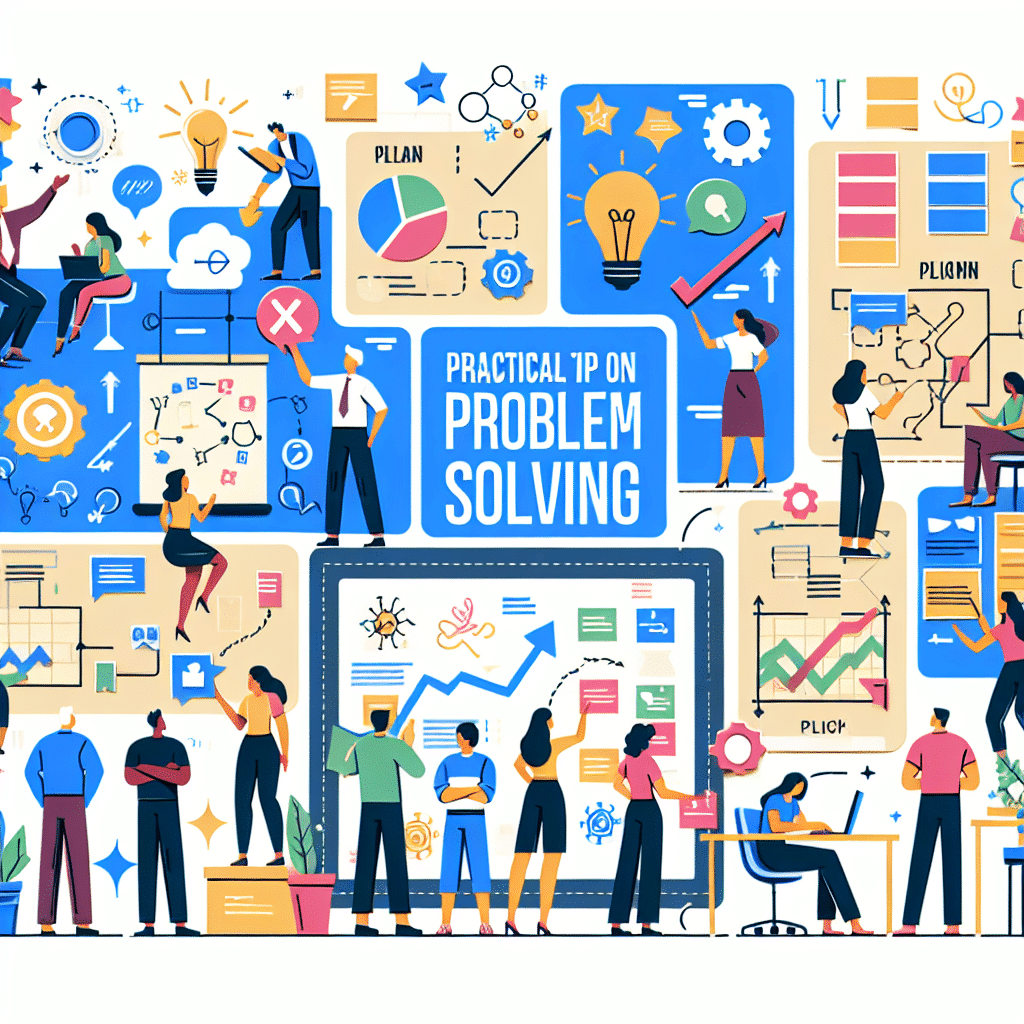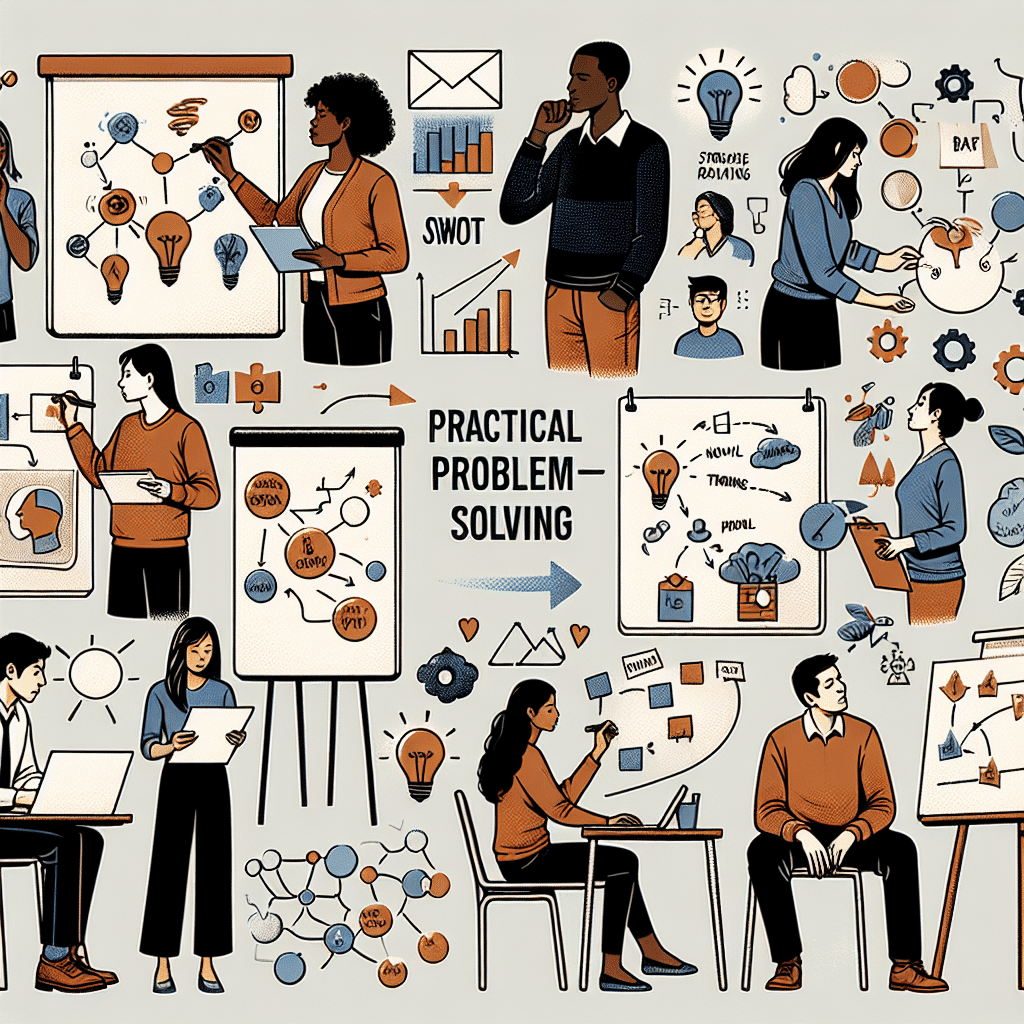Identifying the Problem
When faced with a practical problem, the first and most crucial step is to identify the problem itself. Without a clear understanding of what needs to be solved, it is impossible to find a suitable solution. Identifying the problem involves critically evaluating the situation, gathering relevant information, and defining the specific issue at hand.
To effectively identify the problem, start by asking questions such as:
- What is the exact nature of the problem?
- When and where does the problem occur?
- Who does the problem affect?
- What are the potential causes of the problem?
By answering these questions, you can gain clarity on the problem and its root causes.
It is important to approach the identification process objectively and without making assumptions. Sometimes, what appears to be the problem on the surface may not be the underlying issue. Taking the time to gather accurate information and considering different perspectives will lead to a more accurate problem statement.
Additionally, it is crucial to prioritize the identified problem and determine its urgency. Some problems may require immediate attention, while others can be addressed over a longer period of time. Understanding the urgency will help in allocating appropriate resources and determining the necessary timeframe to solve the problem.
Overall, effective problem identification is the foundation for finding viable solutions. By investing time and effort into this stage, you set the stage for successful problem-solving.

Gathering Information and Analyzing
After identifying the problem, the next step in practical problem-solving is gathering information and analyzing the situation. This crucial step involves collecting relevant data and facts to gain a deeper understanding of the problem at hand. By conducting thorough research and analysis, you can uncover potential causes and contributing factors, helping you to develop an effective solution.
There are several strategies you can employ during this stage to gather the necessary information:
- Conduct Surveys: Surveys can be a valuable tool for gathering information from a large number of people. By designing well-crafted questionnaires, you can collect data and opinions from various perspectives, which can help in identifying patterns and trends.
- Interview Stakeholders: Speaking directly with individuals who are affected by or involved in the problem can provide valuable insights. By interviewing stakeholders such as customers, employees, or experts in the field, you can gain firsthand knowledge and specific details that might otherwise go unnoticed.
- Review Existing Data: Look for any existing data or reports that might shed light on the issue. This could include sales figures, customer feedback, or performance metrics. Analyzing this information can help you identify patterns or trends that can guide your problem-solving process.
- Use Decision-Making Tools: There are many decision-making tools and frameworks available that can help you organize and analyze information effectively. For example, SWOT analysis (Strengths, Weaknesses, Opportunities, and Threats) can help you assess internal and external factors that may impact the problem and solution.
Once you have gathered the information, the next step is to analyze it thoroughly. This involves examining the data, identifying patterns or correlations, and drawing conclusions based on the evidence. Look for any commonalities or trends that may provide insights into the problem’s causes or potential solutions.
During the analysis phase, it’s essential to maintain an objective and open mindset. Avoid making assumptions or jumping to conclusions prematurely. Instead, focus on identifying and understanding the underlying factors contributing to the problem.
By taking the time to gather information and analyze the situation, you’ll be equipped with the insights and knowledge needed to generate effective solutions. This stage of problem-solving is crucial for making informed decisions and setting yourself up for successful implementation.
Exploring Possible Solutions
Once you have gathered all the necessary information and analyzed the problem, it is time to explore possible solutions. This is an important step in the practical problem-solving process as it allows you to brainstorm and consider all potential options.
To begin exploring possible solutions, it is helpful to involve a diverse group of individuals. This could include team members, colleagues, or stakeholders who have a vested interest in finding a solution to the problem. A group brainstorming session can help generate multiple ideas and perspectives.
During the brainstorming session, it is important to encourage open and creative thinking. No idea should be immediately dismissed, as even unlikely ideas can inspire more practical solutions. Creating an environment where everyone feels comfortable sharing their thoughts and suggestions is crucial.
After the brainstorming session, it is time to evaluate and refine the ideas generated. Start by reviewing each suggestion and identifying the ones that seem to align best with the underlying problem. Consider the feasibility, practicality, and potential impact of each solution.
It can be helpful to use a decision matrix or other decision-making tools to objectively evaluate the potential solutions. These tools allow you to assign weights to different criteria and rate each solution accordingly. For example, you might consider factors such as cost, time required, resources needed, and potential risks.
As you evaluate the possible solutions, keep in mind that there may not be a single “perfect” solution. Practical problem-solving often involves finding a balance between competing priorities and constraints. Look for solutions that offer the most benefits while also addressing the root cause of the problem.
Once you have narrowed down the list of possible solutions, it may be helpful to create prototypes or test out the ideas on a small scale. This can help you assess their effectiveness and identify any potential issues or challenges.
During this exploration phase, it is important to remain flexible and open to new ideas. Sometimes, unexpected solutions can arise that were not initially considered. By maintaining a creative mindset and being open to innovative approaches, you increase your chances of finding a practical and effective solution to the problem.

Implementing the Solution
Once you have identified and analyzed possible solutions to the problem, it is time to implement the chosen solution. This stage requires careful planning and execution to ensure that the solution is effectively applied and addresses the root cause of the problem. Here are some practical tips to help you navigate this phase:
1. Develop an Action Plan
Before diving into the implementation process, it is essential to create a detailed action plan. This plan outlines the specific steps, tasks, and resources needed to successfully implement the solution. Make sure to identify the individuals or teams responsible for each task and set realistic timelines for completion.
2. Communicate and Delegate
Effective communication is vital during the implementation phase. Clearly communicate the action plan to all stakeholders involved, ensuring that everyone understands their roles and responsibilities. Delegate tasks according to individuals’ expertise and availability, fostering collaboration and shared ownership of the solution.
3. Monitor Progress
Continuously monitor the progress of the implementation to ensure that the solution is being applied correctly and on schedule. Regularly check in with individuals or teams responsible for specific tasks, provide support if needed, and address any challenges or roadblocks that may arise. This allows for timely adjustments to be made and keeps the implementation on track.
4. Stay Flexible
While having a well-defined action plan is crucial, it is also important to remain flexible during the implementation process. Unexpected obstacles or changes in circumstances may occur, requiring adjustments to the original plan. Stay open to new ideas and approaches, and be willing to modify the implementation strategy if necessary.
5. Seek Feedback
Throughout the implementation phase, actively seek feedback from those affected by the problem and solution. This can include team members, customers, or other stakeholders. By gathering input and insights, you can gauge the effectiveness of the solution in addressing the problem and make any necessary improvements.
6. Document the Process
As you implement the solution, document the entire process. This includes recording the steps taken, resources used, and any challenges or successes encountered along the way. This documentation serves as a valuable reference for future problem-solving endeavors and can provide insights for continuous improvement.
By following these practical tips during the implementation phase, you can increase the likelihood of successfully addressing and solving the identified problem. Remember to stay focused, communicate effectively, and adapt as needed. With systematic execution, you can achieve the desired results and move towards long-term success.
Implementing the Solution
Implementing the Chosen Solution
Once you have identified and analyzed potential solutions to the problem, it is time to move forward with implementing the chosen solution. This stage requires careful planning and execution to ensure a successful outcome.
Start by creating a detailed plan that outlines the necessary steps to implement the solution. Break down the plan into smaller tasks and assign responsibilities to individuals or teams to ensure efficient execution. It is crucial to establish clear timelines and deadlines to keep everyone on track and accountable.
Communication plays a vital role during the implementation phase. Regularly update all stakeholders, such as team members, clients, or customers, about the progress made and any changes or challenges encountered. This transparency helps to maintain trust and manage expectations throughout the process.
As you implement the solution, be prepared to make adjustments along the way. Unexpected obstacles may arise, requiring you to reevaluate and modify the plan if necessary. Remaining flexible and adaptable will help ensure that you stay on course towards achieving the desired outcome.
It is also important to allocate the necessary resources to support the implementation. This includes providing any required training, obtaining additional tools or equipment, and securing any financial or human resources needed for a smooth execution.
Monitoring and Tracking Progress
During the implementation phase, it is essential to monitor and track progress to evaluate the effectiveness of the chosen solution. This enables you to identify any potential issues or inefficiencies early on and make adjustments as needed.
Establish key performance indicators (KPIs) to measure the success of the implementation. These could include metrics such as cost savings, increased efficiency, customer satisfaction ratings, or any other relevant factors specific to your problem and solution. Regularly assess and document the KPIs to gauge the progress being made.
Consider utilizing project management tools or software to help streamline the monitoring process. These tools can provide real-time updates, allow for collaboration among team members, and generate reports for analysis and evaluation.
Celebrating Success and Learning from Failure
Once the implementation is complete, take the time to celebrate any successes achieved. Recognize and acknowledge the efforts of the individuals or teams involved in finding and implementing the solution. Celebrating success helps to foster a positive work culture and motivates individuals to continue problem-solving and finding innovative solutions in the future.
In addition to celebrating success, it is equally important to learn from any failures or setbacks encountered during the implementation. Conduct a thorough analysis to identify the reasons for these failures and use them as valuable learning opportunities. Adjust strategies, processes, or approaches as needed to prevent similar failures from occurring in the future.
By implementing the chosen solution effectively, monitoring progress, and learning from both successes and failures, you can establish a continuous improvement process that enhances problem-solving capabilities and drives overall success.

Conclusion:
In order to effectively solve practical problems, it is important to follow a systematic approach. This includes identifying the problem, gathering information and analyzing it, exploring possible solutions, implementing the chosen solution, and evaluating the results. By following these steps, individuals and teams can navigate through challenges and find effective solutions.
Identifying the problem involves clearly defining the issue and understanding its impact. This can be done through careful observation and analysis of the situation at hand.
Gathering information and analyzing it helps in gaining a deeper understanding of the problem and its underlying causes. By researching and collecting relevant data, individuals can identify patterns or trends that may contribute to the problem.
Exploring possible solutions involves brainstorming different ideas and evaluating their feasibility and potential effectiveness. It is important to consider various perspectives and approaches in order to find the best solution.
Implementing the chosen solution requires careful planning and execution. This may involve breaking down the solution into smaller steps and assigning responsibilities to different team members. Communication and coordination are key during this stage.
Evaluating the results is crucial to determine the success of the solution and to identify any necessary adjustments or improvements. This can be done through collecting feedback, analyzing data, and comparing the outcomes with the initial goals.
By following these practical problem-solving tips, individuals and teams can enhance their problem-solving skills and effectively navigate through challenges. With a systematic approach in place, finding solutions becomes a more manageable and efficient process.






